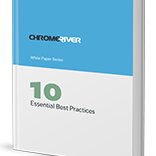 One of the most critical issues for any non-profit is maintaining a close eye on spend. One area where things can get out of hand if not managed carefully is employee (and non-employee) expenses – everything from operational items like paper for the office printer, to airline tickets and hotel stays.
One of the most critical issues for any non-profit is maintaining a close eye on spend. One area where things can get out of hand if not managed carefully is employee (and non-employee) expenses – everything from operational items like paper for the office printer, to airline tickets and hotel stays.
Although taping receipts to paper and filling in a spreadsheet may seem like the most cost-effective way for organizations to submit, reimburse and report on individuals’ expenses, the added administrative time that this requires makes it a false economy. Given the growing complexity of many non-profit organizations’ funding and financial reporting, a travel and expense management (TEM) solution is rapidly moving from a nice-to-have tool to a business-critical requirement.
As the TEM market matures, there are a growing number of companies in the field, offering significantly different solutions. It’s therefore essential that organizations know what to look for when selecting their solution partner – after all, this will likely be a multi-year engagement, so it needs to be done right, first time.
Some of the most important questions to ask include:
How does the pricing work?
Some TEM solutions have a single, fixed, pricing system, often based on volume, whereas others provide more flexibility for different types of organization. If your vendor only offers transaction-based pricing, you could end up with a significant variance in the size of your bill during high-volume months. Not only can this be expensive, but it also makes it more complex to predict and manage not only your employees’ spend, but also your organizational spend on the solution. Look for pricing models that work well for your organization’s specific needs, such as unlimited reports based on the number of full-time employees.
How do you handle per diems?
Per diems can differ considerably dependent on factors ranging from locations, to providers of grants, so you need to ensure that your solution is flexible enough to adapt. If, for example, your TEM software can manage and automatically update CONUS / OCONUS tables within the system, it will make expenses easier for users to file, while reducing the administrative burden for approvers to manually adjust per diems based on location.
How do you support multiple grant regulations or complex project tracking?
As different grants require greater or lesser levels of granularity when it comes to managing and reporting spend, you need a solution that can be configured to meet specific needs. This requires the TEM solution to have the flexibility and strength to support multiple business rules, tailored for each grantor. For complex and high-volume project tracking, you will want the flexibility to automate, filter and easily allocate to various projects. To what extent does the solution enable you to configure specific business rules for the organization?
How do you work with non-employees?
Many non-profits have considerable numbers of non-employees, who may file just one or two expense reports for a specific initiative. Therefore, the cost and administrative hassle of adding them to the system can far outweigh the benefits of doing so. To reduce the burden on the internal team, look for a solution that can simply import lists of approved non-employees from 1099 forms, and allow expenses to be filed centrally based on the business rules in place.
How robust are reporting and visibility?
Given non-profits’ need for greater levels of transparency into their spending than for-profit organizations, a TEM solution must support that requirement, both for operational and travel spend. You should find out what level of functionality the solution offers when it comes to providing detailed, tailored dashboards to track and manage your spend. Of course there is also the cost issue as well – is this analysis included within the solution, or as an additional service?
How do you manage payments?
How are your employees procuring goods and services? There are many corporate card programs and automated payment solutions via banking partners geared toward non-profits. Are you maximizing rebates, incentives and other benefits available through these non-profit sponsored programs? Make sure your TEM partner has the functionality to integrate with all of these at no additional cost.
How can you ensure ROI?
While all the above functionality are critical factors, if the solution’s cost is prohibitively expensive, it all becomes moot. You therefore need to ensure that the financial benefits offered by the solution – ranging from reduced administrative burden for reimbursing expenses to ease of creating reports for grantors and donors – outweigh the cost of the system itself. Any vendor should be able to calculate this for you.
Being armed with this information will make it significantly easier for you to make the right decision for a TEM solution. If you’re looking for a partner that truly understands the issues of expense management for non-profit organizations, give us a call at 888-781-0088 or contact info@chromeriver.com.
Subscribe
Latest Posts
Posts by Category
I just love the Chrome River application. I could probably sell it! Finance Administrative Coordinator Law Firm, 800 Employees
Can’t we just move year-end, so that we can roll out Chrome River sooner!? Financial Systems Director Law Firm, 300 Employees


Comments